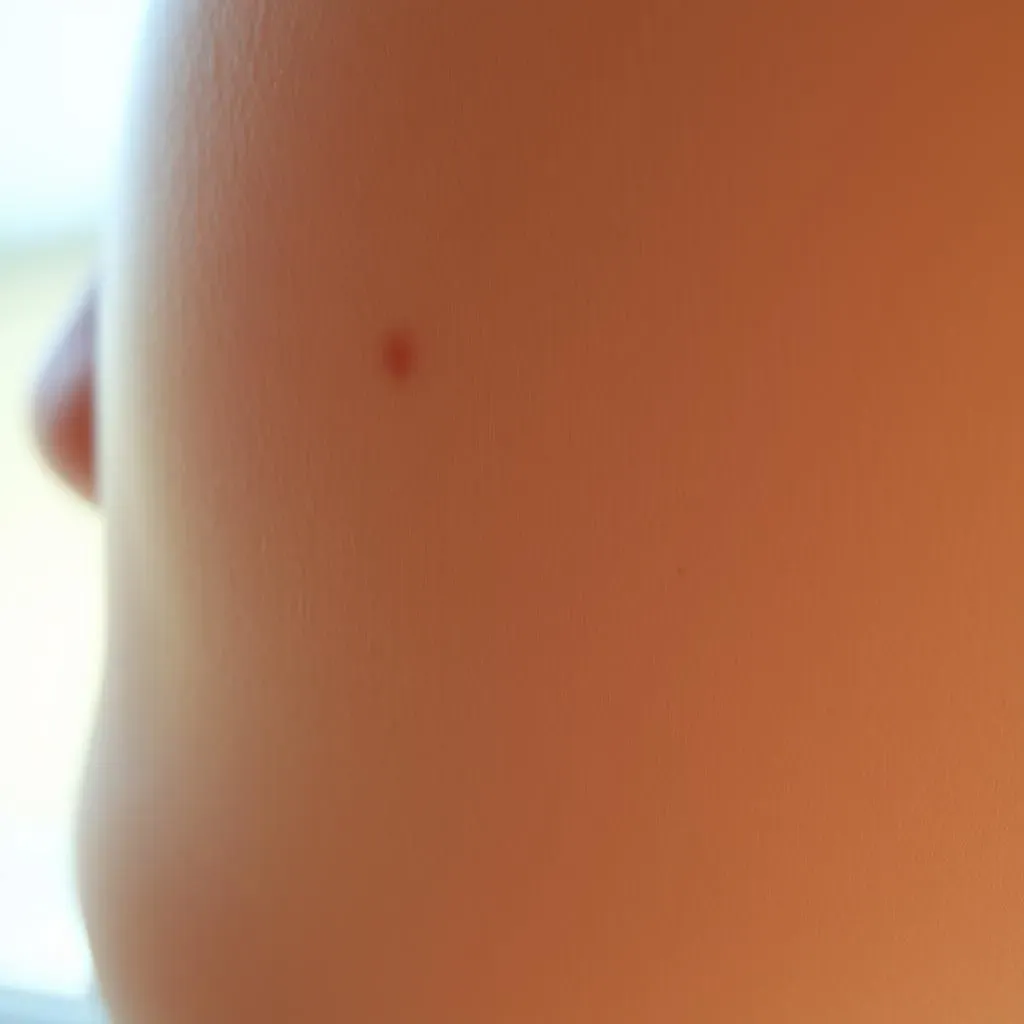Table of Contents
Ingrown hairs can be a frustrating and painful problem for many, especially when they lead to scarring. Scars from ingrown hair removal can be a source of embarrassment and self-consciousness, affecting not only our physical appearance but also our mental well-being. However, there is hope for those struggling with these unwanted marks. In this article, we will delve into the world of scar from ingrown hair removal, exploring the causes, symptoms, and most importantly, the treatments and prevention methods available. From at-home remedies to professional treatments, we will discuss the most effective ways to reduce the appearance of ingrown hair scars and promote smoother, healthier-looking skin. Whether you're looking to alleviate current scarring or prevent future occurrences, this comprehensive guide will walk you through the process, providing you with the knowledge and tools necessary to tackle scar from ingrown hair removal and regain confidence in your skin.
Understanding Scars from Ingrown Hair Removal

Understanding Scars from Ingrown Hair Removal
What are Ingrown Hair Scars?
Ingrown hair scars occur when hair curls back into the skin instead of growing out, causing inflammation, redness, and sometimes pus-filled bumps. If left untreated or picked at, these bumps can lead to scarring, which may appear as dark spots, keloid formations, or indentation in the skin. These scars can be particularly frustrating as they often appear in visible areas, such as the face, neck, or bikini line.
The formation of scars from ingrown hairs is a complex process involving the body's natural response to injury. When the skin is damaged, either from the ingrown hair itself or from picking or scratching, the body initiates a repair process. This process includes inflammation, the deposition of collagen, and the formation of new tissue. However, this process can sometimes result in the formation of scar tissue, which may have a different texture and appearance than the surrounding skin.
Types of Scars | Description | Appearance |
|---|---|---|
Atrophic Scars | Depressed scars that appear as pits or indentation | Thinner than the surrounding skin |
Hypertrophic Scars | Raised scars that are thicker than the surrounding skin | Red, itchy, and may form keloids |
Hyperpigmented Scars | Scars with increased melanin, appearing darker than the surrounding skin | Flat, darker areas |
Risks Factors for Scarring
Certain individuals are more prone to scarring from ingrown hairs due to genetic predisposition, skin tone, or hair texture. For example, people with curly or coarse hair are more likely to experience ingrown hairs, which can increase the risk of scarring. Additionally, poor shaving techniques, such as shaving too closely or against the grain, can also contribute to the development of scars.
- Genetic predisposition
- Curly or coarse hair
- Poor shaving techniques
- Picking or scratching at ingrown hairs
Understanding the causes and risk factors associated with ingrown hair scars is the first step towards prevention and treatment. By recognizing the signs of ingrown hairs and taking proactive measures, individuals can reduce their risk of scarring and promote healthier, smoother skin.
AtHome Treatments for Scar from Ingrown Hair Removal

AtHome Treatments for Scar from Ingrown Hair Removal
Natural Remedies for Ingrown Hair Scars
When it comes to treating scars from ingrown hairs at home, there are several natural remedies that can be effective. One of the most popular methods is using a warm compress to help bring the ingrown hair to the surface, making it easier to remove. Simply soak a cloth in warm water, apply it to the affected area for a few minutes, and then gently exfoliate with a gentle scrub or a chemical exfoliant containing alpha-hydroxy acids (AHAs) or beta-hydroxy acids (BHAs).
Another natural remedy is tea tree oil, which has antibacterial properties that can help prevent infection and promote healing. Mix a few drops of tea tree oil with a carrier oil like coconut or olive oil and apply it to the affected area. Aloe vera gel is also a soothing and calming agent that can help reduce inflammation and promote skin regeneration.
Remedy | Description | Benefits |
|---|---|---|
Warm Compress | Applying a warm, damp cloth to the affected area | Brings ingrown hair to the surface, reduces inflammation |
Tea Tree Oil | Antibacterial properties, mixed with carrier oil | Prevents infection, promotes healing |
Aloe Vera Gel | Soothing and calming properties | Reduces inflammation, promotes skin regeneration |
Chemical Exfoliants and Topical Creams
For more stubborn scars, chemical exfoliants and topical creams can be highly effective. Products containing glycolic acid or lactic acid can help break down dead skin cells and promote collagen production, reducing the appearance of scars. Silicone gel sheets are also useful in flattening raised scars and improving skin texture.
Retinoid creams, derived from vitamin A, can help stimulate cell turnover and collagen production, reducing the appearance of fine lines and hyperpigmentation. However, these products can make the skin more sensitive to the sun, so it's essential to use a broad-spectrum sunscreen with at least SPF 30 daily.
- Glycolic Acid: Promotes collagen production, reduces appearance of fine lines
- Lactic Acid: Hydrates the skin, improves skin texture
- Silicone Gel Sheets: Flattens raised scars, improves skin texture
- Retinoid Creams: Stimulates cell turnover, reduces hyperpigmentation
Prevention of Ingrown Hair Scars: Tips and Tricks

Prevention of Ingrown Hair Scars: Tips and Tricks
Shaving Techniques to Prevent Ingrown Hairs
To prevent ingrown hairs and subsequent scarring, it's essential to adopt proper shaving techniques. Shaving with the grain, rather than against it, can significantly reduce the risk of ingrown hairs. Using a sharp razor and shaving cream can also help the razor glide smoothly over the skin, minimizing irritation and cuts.
Exfoliating the skin before shaving can help remove dead skin cells and allow the hair to grow out more easily. Additionally, shaving in the direction of hair growth can help prevent the hair from becoming trapped beneath the skin's surface.
Shaving Tips | Benefits | Precautions |
|---|---|---|
Shave with the grain | Reduces risk of ingrown hairs | Avoid shaving over the same spot multiple times |
Use a sharp razor | Minimizes irritation and cuts | Replace razor frequently to maintain sharpness |
Exfoliate before shaving | Removes dead skin cells, allows hair to grow out | Be gentle to avoid irritating the skin |
Skincare Routine for Prevention
Maintaining a consistent skincare routine can help prevent ingrown hairs and scarring. Keeping the skin clean and moisturized is essential, as dry skin can increase the risk of ingrown hairs. Using a gentle cleanser and moisturizer can help keep the skin hydrated and balanced.
Exfoliating regularly, either manually or with chemical exfoliants, can help remove dead skin cells and prevent hair from becoming trapped. Additionally, using products containing salicylic acid or benzoyl peroxide can help unclog pores and reduce inflammation.
- Cleanse the skin twice a day
- Moisturize after bathing or showering
- Exfoliate 1-2 times a week
- Use products containing salicylic acid or benzoyl peroxide
Professional Treatments for Ingrown Hair Scar Removal

Professional Treatments for Ingrown Hair Scar Removal
Laser Hair Removal for Scar Prevention
Laser hair removal is a popular option for those who experience frequent ingrown hairs and scarring. By reducing hair growth, laser hair removal can prevent future ingrown hairs and subsequent scarring. This treatment is especially effective for individuals with curly or coarse hair, as it targets the hair follicle, reducing the likelihood of hair growing back into the skin.
There are several types of laser hair removal, including alexandrite, diode, and Nd:YAG lasers. Each type is suited for different skin tones and hair types. It's essential to consult with a dermatologist or licensed professional to determine the best laser treatment for your individual needs.
Chemical Peels for Scar Reduction
Chemical peels are a non-invasive treatment that can help reduce the appearance of ingrown hair scars. These peels contain alpha-hydroxy acids (AHAs) or beta-hydroxy acids (BHAs) that exfoliate the skin, promoting cell turnover and collagen production. By removing the top layers of the skin, chemical peels can help fade hyperpigmentation and smooth out texture.
There are several types of chemical peels, ranging from superficial to deep. Glycolic acid peels are commonly used for treating ingrown hair scars, as they are effective in removing dead skin cells and promoting collagen production. However, it's crucial to follow the dermatologist's instructions and use sunscreen after the treatment, as the skin may be more sensitive.
- Glycolic Acid Peel: Effective for hyperpigmentation and texture
- Lactic Acid Peel: Hydrates the skin, suitable for sensitive skin
- Salicylic Acid Peel: Unclogs pores, reduces inflammation
Microdermabrasion and Microneedling for Skin Texture Improvement
Microdermabrasion and microneedling are two minimally invasive treatments that can improve skin texture and reduce the appearance of scars. Microdermabrasion uses fine crystals to exfoliate the skin, removing dead skin cells and promoting collagen production. Microneedling, on the other hand, uses tiny needles to create micro-injuries, stimulating the skin's natural healing process and increasing collagen production.
Both treatments can be effective in reducing the appearance of ingrown hair scars, especially when combined with other treatments like chemical peels or laser hair removal. However, it's essential to find a qualified professional, as improper technique can lead to further scarring or infection.
Treatment | Benefits | Risks |
|---|---|---|
Microdermabrasion | Improves skin texture, reduces appearance of scars | Temporary redness, dryness |
Microneedling | Stimulates collagen production, reduces hyperpigmentation | Temporary bruising, infection if not done properly |
Choosing the Best Option for Your Scar from Ingrown Hair Removal

Choosing the Best Option for Your Scar from Ingrown Hair Removal
With so many treatments available for scar from ingrown hair removal, choosing the best option can be overwhelming. It's essential to consider your individual skin type, the severity of the scarring, and your personal preferences when selecting a treatment. For those with mild scarring, at-home treatments such as chemical exfoliants and topical creams may be sufficient. However, for more severe scarring, professional treatments like laser hair removal, chemical peels, or microneedling may be necessary.
When deciding between these options, it's crucial to weigh the benefits and risks. For example, laser hair removal provides long-term results but requires multiple sessions and can be expensive. Chemical peels offer a non-invasive solution but may require repeated treatments. Microneedling stimulates collagen production but can be painful and requires proper aftercare.
Treatment | Benefits | Risks |
|---|---|---|
Laser Hair Removal | Permanent hair reduction, prevents future ingrown hairs | Expensive, requires multiple sessions, potential burns |
Chemical Peels | Non-invasive, improves skin texture, reduces hyperpigmentation | Temporary redness, dryness, requires repeated treatments |
Microneedling | Stimulates collagen production, improves skin texture | Painful, requires proper aftercare, risk of infection |
Ultimately, the best option for your scar from ingrown hair removal will depend on your individual needs and preferences. It's recommended to consult with a dermatologist to determine the most effective treatment plan. They can help you create a personalized plan, taking into account your skin type, the severity of scarring, and your budget.
- Consider your skin type: Normal, dry, oily, or combination
- Evaluate the severity of scarring: Mild, moderate, or severe
- Assess your budget: At-home treatments, professional treatments, or combination
- Think about your preferences: Non-invasive, minimal downtime, or long-term results
Conclusion: Taking Control of Scar from Ingrown Hair Removal
Scar from ingrown hair removal can be a frustrating and enduring issue, but it doesn't have to be permanent. By understanding the causes of ingrown hairs and their resulting scars, and by implementing the treatments and prevention strategies outlined in this article, you can take the first steps towards reducing the appearance of these scars and achieving the smooth, healthy skin you deserve. Remember, whether you opt for at-home remedies or professional treatments, consistency and patience are key. Don't let scar from ingrown hair removal hold you back – explore your options, find what works best for you, and start your journey towards scar-free skin today.
